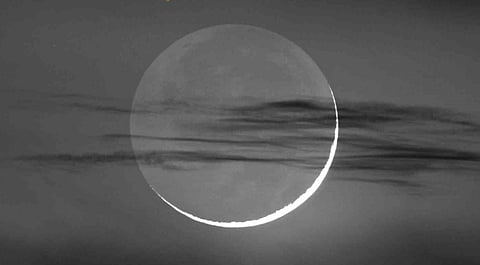Crescent moon for Dhul Qadah expected to be visible on April 28, say UAE astronomers
Experts note the crescent won’t be visible to the naked eye on Sunday evening

Abu Dhabi: Astronomers expect the crescent moon marking the beginning of the Islamic month of Dhul Qadah to be visible in most parts of the world on Monday, April 28, 2025, according to calculations released this week by the Islamic Crescent Observation Project (ICOP).
The central conjunction (new moon) is set to occur on Sunday, April 27, 2025, at 19:31 UTC. However, experts note that the crescent will not be visible to the naked eye on Sunday evening in most regions due to the timing of the conjunction and the moon’s position relative to the horizon.
Visibility maps generated using Accurate Times software and the Odeh criteria indicate the following for Sunday, April 27:
Crescent visibility will be impossible in regions marked in red, where the moon will either set before the sun or the conjunction will occur after sunset.
In areas shaded blue, the crescent will be visible only through a telescope.
In pink-shaded areas, the crescent may be visible with a telescope and, under ideal atmospheric conditions and with experienced observers, could be seen with the naked eye.
In green-shaded regions, the crescent is expected to be clearly visible to the naked eye.
By Monday, April 28, visibility will significantly improve, and the crescent is expected to be easily seen across large parts of the globe, particularly in western regions.
Based on the Global Islamic Calendar, which relies on pre-calculated crescent visibility without requiring physical sighting, Dhul Qadah is expected to begin on Monday, April 28, 2025, in western regions, and on Tuesday, April 29, 2025, in eastern regions.
However, the ICOP advises that actual start dates may vary depending on local moon sighting practices and the specific criteria adopted by different countries.
Sign up for the Daily Briefing
Get the latest news and updates straight to your inbox





